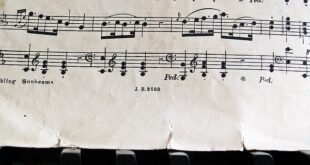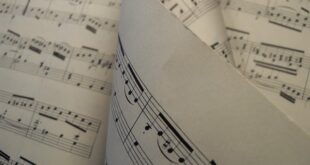If you’re beginning to play a musical instrument, one of the first things you’ll learn is a major scale, although there are many other sorts of scales. Others are cheerful, some are sad, some have five notes, and some have twelve notes.
Scales are a subject that many musicians are terrified of. Here, we want to provide some insight into why they are so essential and how you may make them a lot more enjoyable to study. A good place to start is to recognise that they form the foundation of much of the music we play. Scales are simply one of the many patterns that make up music.
Table of Contents
Why scales are important
A scale is a collection of notes that sound well when played together. That’s all! It is a collection of ascending and descending notes used to create a melody. They are also the foundation for harmony, and chords may be constructed from scales. There are no fixed restrictions regarding the notes or the number of notes; some individuals even create their own scales (though this is highly complex stuff and should not be attempted by novices!).
Scales are one method of organising sound; they are simply a stairway that ascends and descends a set of pitches. The form of the staircase varies for major and minor scales, but for every major scale, the design remains constant regardless of whatever note the scale begins on. This is significant because it provides the pattern meaning and assists our brains in determining which note is the ‘home’ (or ‘tonic’) note.
Why should I learn scales?
There are several reasons why you should learn to play various scales. For starters, they are beneficial to your fingers as a kind of physical training, as they will aid in the development of your finger strength and dexterity. Second, they will assist you in improvising (making up solos) and understanding solos that you may learn, as well as understanding why others play the notes they do.
What scale should I learn first?
The Minor Pentatonic Scale is the most typical scale to learn first. The pentatonic scale is highly popular in a wide range of music, from blues and jazz to folk and rock. The simplicity of the pentatonic scale makes it incredibly adaptable. That’s the one I recommend you start with, and once you’ve mastered it (and can utilise it), you should go on to the Major Scale.
Practising scales
What typically goes wrong in the learning process is that scales are split out as one element of the exam and are only considered in that context. Exams and studying scales for the sake of getting marks may soon become tedious. However, when you put them back into their musical context and see them as a beginning point for tonal music, they become a lot more fascinating.
Keeping this in mind, here are a few ideas to try when learning and practising scales:
Find them in the music
Take a piece you are learning and think about what scales it is based on, practice the scales that relate to that piece and in the style of that piece
What note do I start on?
Always begin and conclude with the lowest root note (usually on the thicker strings). This will assist you in retaining the harmonic content of the scale in your mind, allowing you to hear the right tonality of the scale. Later on, you may learn about Modes and various ways to employ the scales, but beginning and finishing on the root note is critical.
Many of the scale forms on this website look to begin on the second fret, but they do not! The pattern must begin on the root note of the scale you wish to perform.
The term scale is derived from the Latin word for ladder. As an example, consider a scale scaling the rungs of a ladder, which is represented by the stave. Every every line or space must have a note.
Each degree of the scale has a special name:
1st degree: the tonic
2nd degree: the supertonic
3rd degree: the mediant
4th degree: the subdominant
5th degree: the dominant
6th degree: the submediant
7th degree: the leading note (or leading tone)
The 8th degree of the scale is actually the tonic but an octave higher.
For that reason, when naming the degrees of the scale you should always call it the 1st degree.
How do I move scales around and what is the root note (R) on all the scales?
The tonality of a scale is defined by its root note. In the Minor Pentatonic Scale (PATTERN 1), for example, there is a (R) root note on the 6th string, which is played with the first finger. The name of the scale is determined by where you position this root note. The A Minor Pentatonic Scale, for example, is demonstrated in the Beginners Course. To play this scale in PATTERN 1, place the (R) root note on note A, which is located on the 5th fret of the 6th string. To play the C minor Pentatonic Scale, position the (R) root note on the 8th fret of the 6th string. The scale may be performed anywhere; simply place your first finger (which is on the root note) on the note you wish to play!
The (R) root note is not always on the thickest string, but I believe you should always begin and end on the lowest root note while practising your scale, therefore you won’t always begin on the thickest string.
All of the scales go up and down the neck, and the key must be appropriate for the song. To comprehend keys, you must first learn basic music theory (my Practical Music Theory course might assist with this), but there is also a lot of material on the web about this, including some below!
Can all scales be moved around?
All scales (and chords) that do not require open strings can be adjusted to any position on the neck. You must, however, know the root note in order to determine what scale you are playing!
Begin by imagining that your Minor Pentatonic Scale can travel around your neck.
Where are the common root notes and where are the notes on the neck?
There is a lesson here that shows you the Notes on The Neck, and it is a very valuable talent to have for a variety of reasons, but you will need to know the notes on the thickest two strings to know where your scales may be played.
F at the first fret, G at the third fret, A at the fifth fret, B at the seventh fret, C at the eighth fret, D at the tenth fret, and E at the twelfth fret are the most prevalent 6th string root notes.
What does Position mean?
This word causes a lot of misunderstanding; some people believe that Position refers to where you are on the neck (e.g., playing around the 8th position would mean playing around the 8th fret), while others believe that Position refers to different methods of playing the same scale [see more on this below]. In this way of thinking, there are 5 positions… playing in G Major Position 4 would indicate you were about the 9th fret!! Very perplexing, and made much more so by the fact that many people (including myself) employ both definitions!
Scale Modes
There are seven modes for each major scale. They are sometimes known as church modes or Greek modes.
They are as follows:
- Ionian (i)
- Dorian (ii)
- Phrygian (iii)
- Lydian (iv)
- Mixolydian (v)
- Aeolian (vi)
- Locrian (vii)
What are Patterns and what is all this CAGED stuff?
Patterns (also known as Shapes or Positions) are several methods of playing the same scale. Because of the guitar’s construction, there is almost always more than one way to play any scale, chord, lick, or whatever.
I believe the best way to learn this is to take a blank neck diagram from the Blank Papers section and then copy the notes from the A Minor Pentatonic scale (A, C, D, E, G) onto the entire neck (hint: every note will be found at least once on every string). When you print the Notes on The Neck graphic, you may simply draw red circles around the notes.
Once you’ve identified all of the notes on the neck, take note of how the same set of notes may be organised into the 5 Patterns.
Then you should attempt the same thing with the notes of the D Minor Pentatonic (D, F, G, A, C) and watch how the same patterns arise but on different frets. That should help you understand the fundamental notes, patterns, and how scale patterns may be shifted around the neck to accommodate different keys!
The CAGED method describes the connections between guitar notes and divides them into five forms. A shape, a shape, a shape, a shape, a shape, a shape, a shape, a shape, a shape, they are related to the only five forms available on the guitar. Every scale or chord may be categorised into one of these “Shapes” but beginners might find this a little tricky. Don’t be trying to get this until you can play and use your position 1 of the Minor Pentatonic and the Major scales.
Work Chromatically
Many of us prefer to practise the “easy” scales first and save the “hard” ones for last. When you practise in the circle of fifths, you go through the beautiful, simple C G D A E B scales before moving on to the more difficult keys.
This can have a negative impact on our learning! We want to get in the habit of practising the tough keys in and around the easy ones. This way, we’ll be totally prepared for everything that comes up during the exam. If you work chromatically, you won’t be tempted to save the more difficult scales for last.
What about the Harmonic and Melodic Minor Scales?
These are advanced scales that are not used much unless you want to play classical (or neoclassical rock) or if you want to get into jazz. As a beginner, you should not waste your time learning these. Spend your time learning things that you will use! Learn things when you need to…
Don’t just go up and down
Continually practising scales in their simplest up and down format, starting from the tonic and ending on the tonic can get very dull very quickly. Try playing them starting from different points, going in different directions and in different styles.
Play with patterns
Usually, a scale is played just by going up and down the staircase: 1,2,3,4 up to 8 and down again. You could try playing around with the notes in different patterns for example: 1,3,2,4,3,5,4,6 etc. or 1,2,3,2,1,3,4,3,2,4,5 etc.
Make it a technical workout
If there is a particular technique or aspect of pieces you are working on that you are finding difficult, for example a rhythm, a bowing pattern, or breath control, use the scale as a chance to practice that technique as well
Consolidate
These are all great methods for improving your knowledge of and ability to play scales and eventually there will come a time when you feel comfortable playing the scales you are learning. When this time comes remember to continue to test yourself regularly.
Conclusion
It all boils down to a simple principle: practice makes perfect and perfect is permanent. It’s important to keep practising consistently
- You want to practice attentively, not mindlessly.
- You want to get constant feedback on what you’re doing to know whether you’re on the right tracks or not.
- Since most of the time when you play, you’re on your own, this means you need to monitor yourself to gather feedback. That means: pay attention to your body, your mental state, and the sound you’re producing.
 The Occasional Orchestra Learn About Everything Music!
The Occasional Orchestra Learn About Everything Music!



